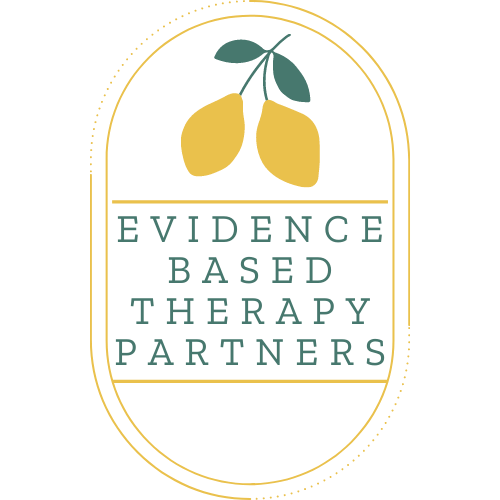
"There will be people who say to you, 'You are out of your lane.’ They are burdened by only having the capacity to see what has always been instead of what can be. But don't you let that burden you."
—Kamala Harris
Obsessive Compulsive Disorder (OCD)
What is OCD?
The major question that people often have when it comes to Obsessive Compulsive Disorder (OCD), is “How do I differentiate if I have OCD or I’m just, perhaps, more anxious and obsessive about things in my life?”
The main way to distinguish OCD from anxiety is to consider whether you have recurrent thoughts, urges, or images that are highly bothersome and feel intrusive. The thoughts, urges, and images, more often than not, feel so uncomfortable that people feel driven to do things in order to neutralize them and reduce their distress. These behaviors are referred to as compulsions.
Most, if not all of us, have had thoughts, images, or impulses that have felt extremely uncomfortable. OCD starts to become a problem when people feel urged to either avoid and/or feel unable to avoid engaging in compulsions to alleviate the distress associated with the intrusive thoughts. This causes people to potentially spend hours of their day obsessing and or engaging in compulsions, leading OCD to interfere with their ability to live fully. There are different types of OCD as outlined by the International OCD Foundation.
Common Types of Obsessions:
-
Contamination
Body fluids (examples: urine, feces)
Germs/disease (examples: herpes, HIV)
Environmental contaminants (examples: asbestos, radiation)
Household chemicals (examples: cleaners, solvents)
Dirt
-
Unwanted Sexual Thoughts
Forbidden or perverse sexual thoughts or images
Forbidden or perverse sexual impulses about others
Sexual obsessions that involve children or incest
Obsessions about aggressive sexual behavior towards others
-
Losing Control
Fear of acting on an impulse to harm oneself
Fear of acting on an impulse to harm others
Fear of violent or horrific images in one’s mind
Fear of blurting out obscenities or insults
Fear of stealing things
-
Obsessions Related to Perfectionism
Concern about evenness or exactness
Concern with a need to know or remember
Fear of losing or forgetting important information when throwing something out
Inability to decide whether to keep or to discard things
Fear of losing things
-
Harm
Fear of being responsible for something terrible happening (examples: fire, burglary)
Fear of harming others because of not being careful enough (example: dropping something on the ground that might cause someone to slip and hurt him/herself)
-
Religious Obsessions (Scrupulosity)
Concern with offending God, or concern about blasphemy
Excessive concern with right/wrong or morality
-
Other Obsessions
Obsessions about one’s sexual orientation.
Concern with getting a physical illness or disease (not by contamination, e.g. cancer)
Superstitious ideas about lucky/unlucky numbers certain colors
Common Types of Compulsions:
-
Washing and Cleaning
Washing hands excessively or in a certain way
Excessive showering, bathing, tooth-brushing, grooming ,or toilet routines
Cleaning household items or other objects excessively
Doing other things to prevent or remove contact with contaminants
-
Mental Compulsions
Mental review of events to prevent harm (to oneself others, to prevent terrible consequences)
Praying to prevent harm (to oneself others, to prevent terrible consequences)
Counting while performing a task to end on a “good,” “right,” or “safe” number
“Cancelling” or “Undoing” (example: replacing a “bad” word with a “good” word to cancel it out)
-
Checking
Checking that you did not/will not harm others
Checking that you did not/will not harm yourself
Checking that nothing terrible happened
Checking that you did not make a mistake
Checking some parts of your physical condition or body
-
Repeating
Rereading or rewriting
Repeating routine activities (examples: going in or out doors, getting up or down from chairs)
Repeating body movements (example: tapping, touching, blinking)
Repeating activities in “multiples” (examples: doing a task three times because three is a “good,” “right,” “safe” number)
-
Other Compulsions
Putting things in order or arranging things until it “feels right”
Telling asking or confessing to get reassurance
Avoiding situations that might trigger your obsessions
How is OCD Treated?
The treatment is the same, no matter the nature of the OCD.
The treatment for OCD with the most robust research is called Exposure and Response (Ritual) Prevention or EXRP.
Essentially, the goal of the treatment is to expose people to their fears and to induce distressing thoughts, images, and impulses without the person engaging in any compulsions or avoidance behavior.
The purpose of this treatment is two-fold:
One, patients learn that often what they fear is not actually realistic, and even if something fearful does happen, patients often realize they can more than handle it.
Two, patients get to experience that their anxiety will go down on its own, without having to engage in compulsions.
Eventually, through repeated exposure, patient’s have the experience of their thoughts getting “right sized” rather than feeling intrusive.
If you believe you may benefit from this treatment, please don’t hesitate to reach out and make an appointment.
“You gain strength, courage and confidence by every experience in which you really stop to look fear in the face. You are able to say to yourself, 'I have lived through this horror. I can take the next thing that comes along.' You must do the thing you think you cannot do.”
—Eleanor Roosevelt

